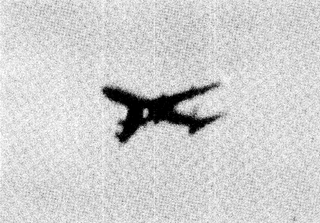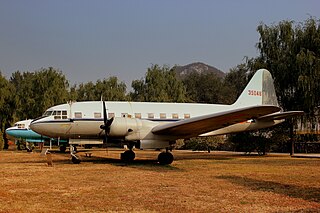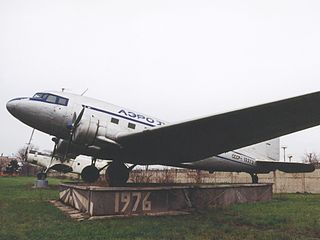
LOT Polish Airlines, legally incorporated as Polskie Linie Lotnicze LOT S.A., is the flag carrier of Poland. It is a founding member of IATA and remains one of the world's oldest airlines in operation. With a fleet of 80 aircraft as of August 2024, LOT Polish Airlines is the 18th largest operator in Europe, serving 105 domestic and international destinations across Europe, Asia and North America. The airline was founded on 29 December 1928 by the Polish government during the Second Polish Republic as a self-governing limited liability corporation, taking over existing domestic airlines Aerolot and Aero, and began operations on 1 January 1929.

Japan Air Lines Flight 123 was a scheduled domestic passenger flight from Tokyo to Osaka, Japan. On August 12, 1985, the Boeing 747 flying the route suffered a severe structural failure and decompression 12 minutes into the flight. After flying under minimal control for a further 32 minutes, the 747 crashed in the area of Mount Takamagahara, 100 kilometres from Tokyo.

In aviation, pilot error generally refers to an action or decision made by a pilot that is a substantial contributing factor leading to an aviation accident. It also includes a pilot's failure to make a correct decision or take proper action. Errors are intentional actions that fail to achieve their intended outcomes. The Chicago Convention defines the term "accident" as "an occurrence associated with the operation of an aircraft [...] in which [...] a person is fatally or seriously injured [...] except when the injuries are [...] inflicted by other persons." Hence the definition of "pilot error" does not include deliberate crashing.

United Airlines Flight 624, a Douglas DC-6 airliner, registration NC37506, was a scheduled passenger flight from San Diego, California to New York City. The four-engined, propeller-driven airplane crashed at 1:41 pm Eastern Daylight Time on June 17, 1948, outside of Aristes, Pennsylvania, resulting in the deaths of all four crew members and 39 passengers on board. The crew had been responding to a false signal of a fire in the front cargo hold by releasing CO2, apparently without opening the pressure relief valves. The part-incapacitated crew began an emergency descent and hit a high-voltage power line.

The MD-12 is a Polish four-engined short-range passenger and civil utility aircraft of the 1960s, which remained in the prototype stage. The PZL brand is conventional, since it did not enter production, and was referred to under its project designation only.

A turbine engine failure occurs when a turbine engine unexpectedly stops producing power due to a malfunction other than fuel exhaustion. It often applies for aircraft, but other turbine engines can fail, like ground-based turbines used in power plants or combined diesel and gas vessels and vehicles.

The Ilyushin Il-12 was a Soviet twin-engine cargo aircraft, developed in the mid-1940s for small and medium-haul airline routes and as a military transport.

LOT Polish Airlines Flight 5055 was a scheduled international passenger flight from Warsaw to New York City. In the late-morning hours of 9 May 1987, the Ilyushin Il-62M operating the flight crashed in the Kabaty Woods nature reserve on the outskirts of Warsaw around 56 minutes after departure. All 183 passengers and crew on board were killed at the scene, making it the deadliest accident involving an Ilyushin Il-62, and the deadliest aviation disaster in Polish history.

LOT Polish Airlines Flight 165 was an Antonov An-24 aircraft, registration SP-LTF, operating a scheduled passenger flight from Warsaw to Krakow Balice airport. It crashed into a mountain on 2 April 1969 at 16:08 local time (UTC+1) during a snowstorm. All 53 people on board were killed.
Aviaarktika was a Soviet airline which started operations on 1 September 1930 and was absorbed by Aeroflot on 3 January 1960.

Baikal Airlines Flight 130 was a scheduled domestic passenger flight from Irkutsk to Moscow that crashed on 3 January 1994. The plane involved in the crash was a Tupolev Tu-154 operated by Russian airline Baikal Airlines. The plane was carrying 115 passengers and 9 crew members and was en route to Moscow when one of the engines suddenly burst into flames. The crew then tried to return to Irkutsk, but lost control of the plane and crashed into a dairy farm near the town of Mamony. All 124 people on board and one person on the ground were killed in the crash. The accident was judged to have been caused by a foreign object entering the engine and slicing several crucial lines to the airplane's hydraulic and fuel systems.

Turkish Airlines Flight 1951 was a passenger flight that crashed during landing at Amsterdam Schiphol Airport, the Netherlands, on 25 February 2009, resulting in the deaths of nine passengers and crew, including all three pilots.

Viasa Flight 742 was an international, scheduled passenger flight from Caracas, Venezuela to Miami International Airport with an intermediate stopover in Maracaibo, Venezuela that crashed on 16 March 1969. After taking off on the Maracaibo to Miami leg, the McDonnell Douglas DC-9-32 hit a series of power lines before crashing into the La Trinidad section of Maracaibo. All 84 people on board perished, as well as 71 on the ground. The crash was the world's deadliest civil air disaster at the time.
Throughout a normal flight, a pilot controls an aircraft through the use of flight controls including maintaining straight and level flight, as well as turns, climbing, and descending. Some controls, such as a "yoke" or "stick" move and adjust the control surfaces which affects the aircraft's attitude in the three axes of pitch, roll, and yaw. Other controls include those for adjusting wing characteristics and those that control the power or thrust of the propulsion systems. The loss of primary control systems in any phase of flight is an emergency. Aircraft are not designed to be flown under such circumstances; however, some pilots faced with such an emergency have had limited success flying and landing aircraft with disabled controls.

Dana Air Flight 0992 was a scheduled Nigerian domestic passenger flight from Abuja to Lagos, Nigeria. On 3 June 2012, the McDonnell Douglas MD-83 aircraft serving the route suffered a dual-engine failure during its approach to Lagos. It failed to reach its intended destination and crashed onto buildings, killing all 153 people on board and six on the ground. With 159 deaths, it remains the deadliest commercial airliner crash in Nigerian history since the Kano air disaster in 1973.

TransAsia Airways Flight 235 was a domestic flight from Taipei to Kinmen, Taiwan. On 4 February 2015, the aircraft serving the flight, a 10-month-old ATR 72-600, crashed into the Keelung River around 5 km from Taipei Songshan Airport, where the aircraft had just departed from. On board were 58 people, 15 of whom survived.

On 7 March 1965, an Aeroflot Li-2 operating as Aeroflot Flight 542 crashed shortly after takeoff from Abakan. Approximately 40 minutes after departure, the aircraft banked left and dived into the mountains of the Krasnoyarsk Krai region of the USSR. All 31 passengers and crew died, making it the deadliest known accident involving the Li-2.

The 5 November 1946 Vnukovo aircraft crashes were a series of three aviation accidents that occurred within an hour near Moscow's Vnukovo Airport, involving two Lisunov Li-2 aircraft and one Douglas C-47. A total of 19 people died. The press did not report these aviation accidents.















